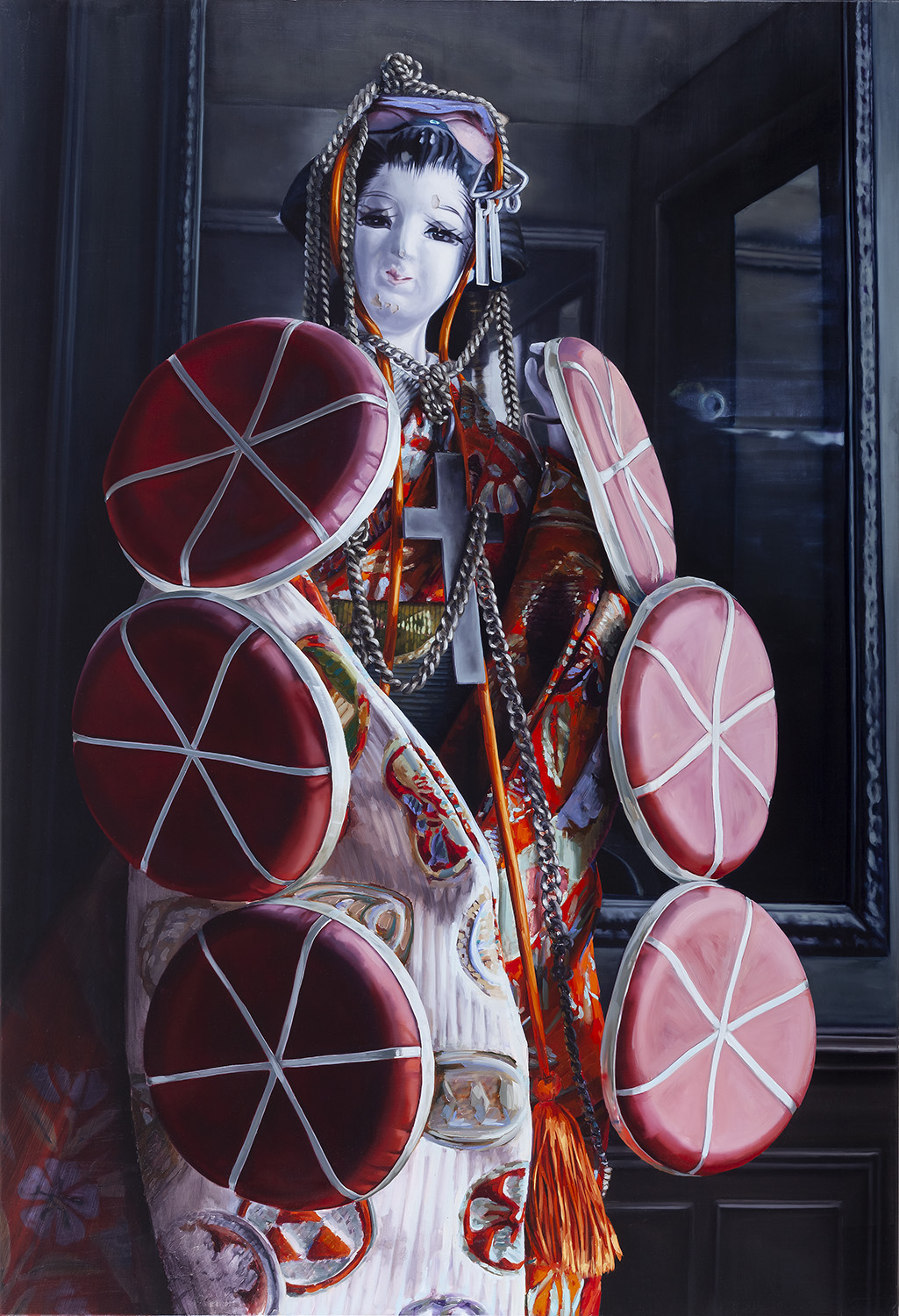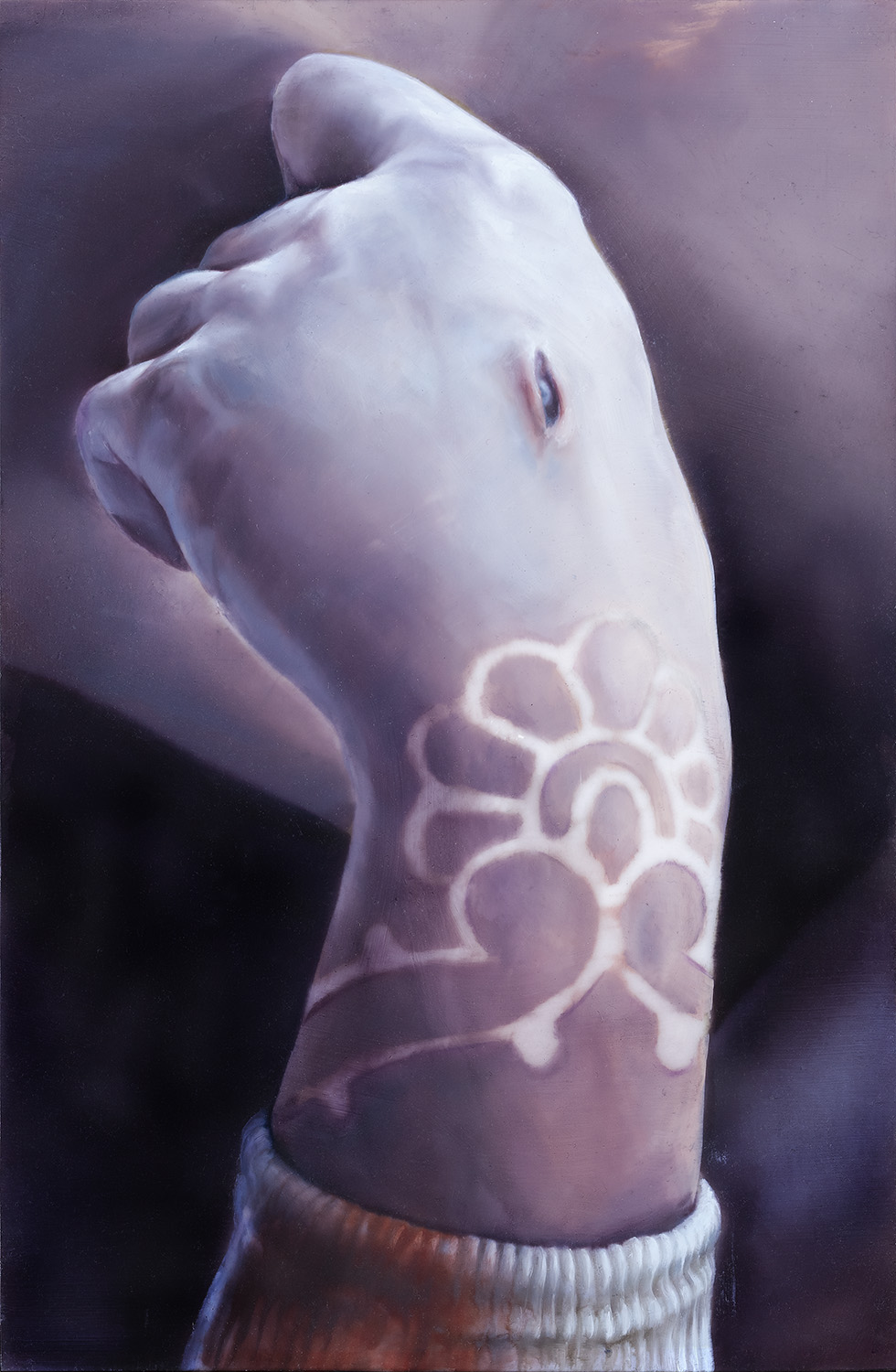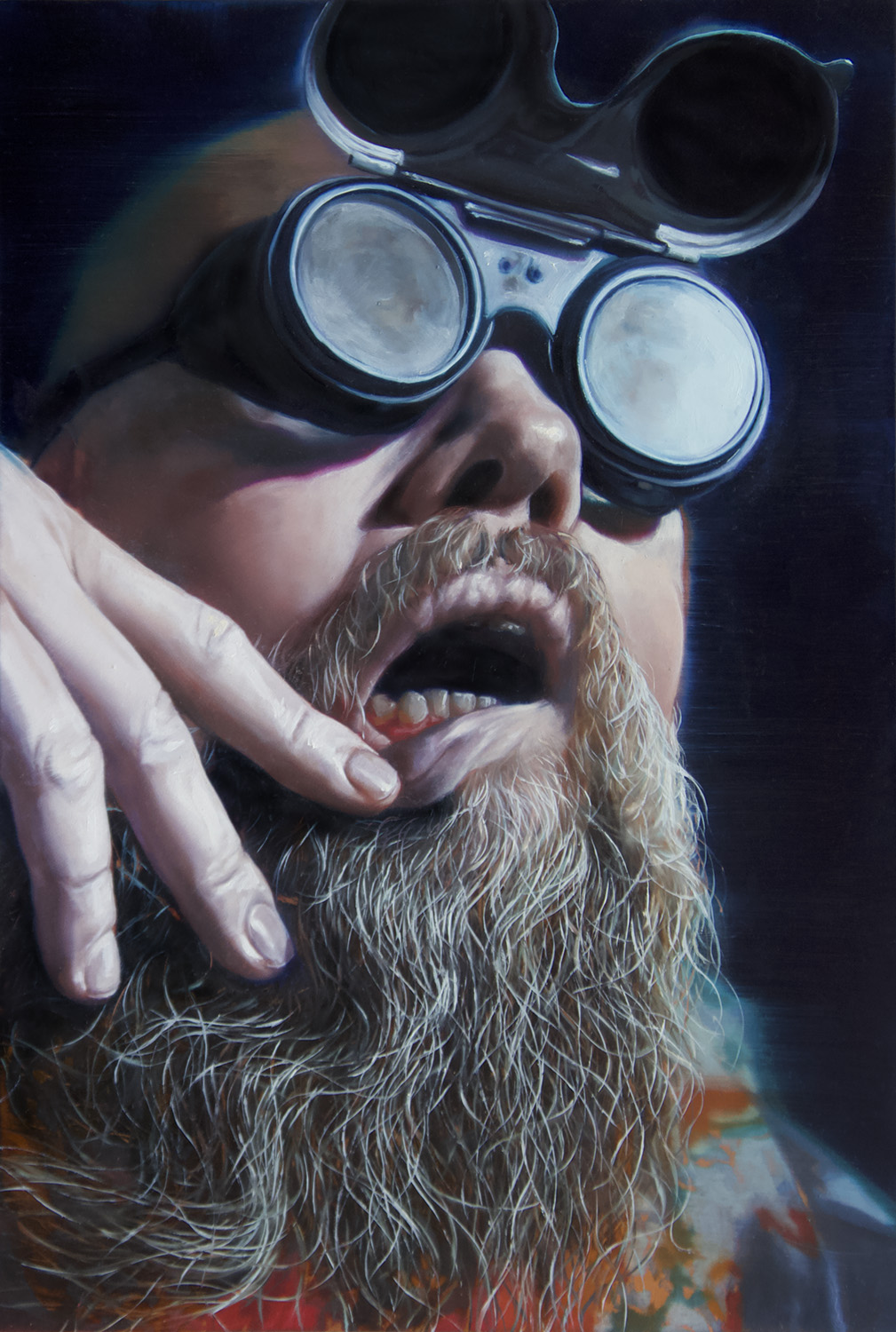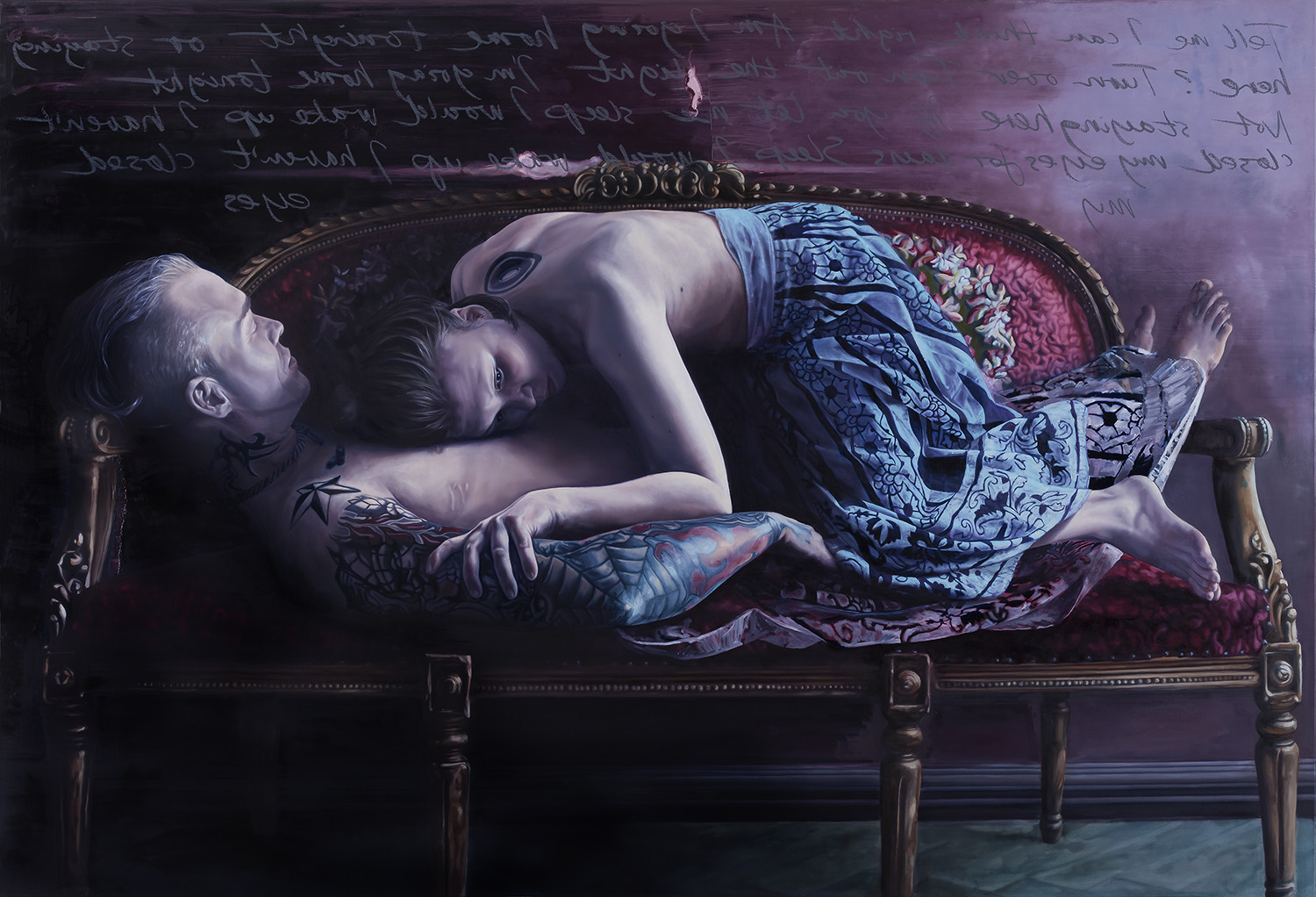A catalogue was published for the exhibition – Catalogue BARBAR
The world of Barbar is like an unbearable flirt: it flatters in one moment and offends in the next, you see inexpressible beauty, then something almost grotesque. Erotica is always present, but so is death. It is not easy to understand what is actually happening, but we are almost incapable of looking away.
Perhaps it is no wonder that two guys were so possessed with her paintings that in spring of 2015 they broke into
a gallery in Oslo and stole two of Barbars paintings. The canva ses were carefully removed from the blind frame, rolled up and carried out. What the thieves did not know was that ever ything had been captured on CCTV.
One year later the police arrested one of the thieves. The artist attended the trial and approached the thief during
a break, introducing herself. While the thief excused himself in all possible ways, the artist wondered about something else: Could she paint him?
When the thief of the previous painting sits as model for the next one, it is difficult to say who is stealing from
whom. Barbar depicted him four times in moments typical for her: sensual, vulnerable and ambivalent. When the thief endeavours to remove something from the wine glass, a fly or a hair, me as an observer I feel the insufficiency of having too short fingers to do so.
It is almost impossible to overlook the bodies, positions and movements in Barbar’s paintings. They emerge from
the darkness and force me to perceive my own physicality. Even in a still life with porcelain dolls Barbar ends up
depicting bodies trying to deal with the fact that they are dead. Or alive.
As a break between breath in and breath out, a condition where we do not know if life is given or taken: the mother
who shows off her child, instead of embracing it. Or the father who tries in vain to breastfeed the same child. All of this is portrayed by means of almost unpleasantly beautiful use of l ight and colour.
Barbar steals from the best, whether it is Caravaggio or Vermeer, and she does not hide it. These are not paintings
which play art-historical hide-and-seek with the observer. Rather, they are paintings that dare to meet your gaze.
Whatever emerges between the observer and the painting does not occur because you have a certain knowledge.
No, this involves something more fundamental, genuine and bodily.
It was said that the Sirens’ song was just as beautiful as it was fatal. When Odysseus approached their island on his
ship, he told his men to block their ears with beeswax. He then had himself tied to the mast. He was therefore the first person to hear the Sirens’ song and live to tell the tale.
If you feel the urge to steal a work of Barbar, this is a natural impulse. It has already occurred. Nobody knows
where the stolen paintings are and who is observing them at the moment of me writing this. At the exhibition,
the artist presents reconstructed fragments of the missing art works. We can only guess what the person who bought
the stolen paintings feels in front of them. Maybe like Odysseus, who has no control over himself and is not completely sure whether he can rely on his men.
Beauty is as painful in the ancient world as in the renaissance and today: When witnessed, it is perceived as
simultaneously absorbing and unbearable. Like something which can only be stolen.
Øystein Stene




